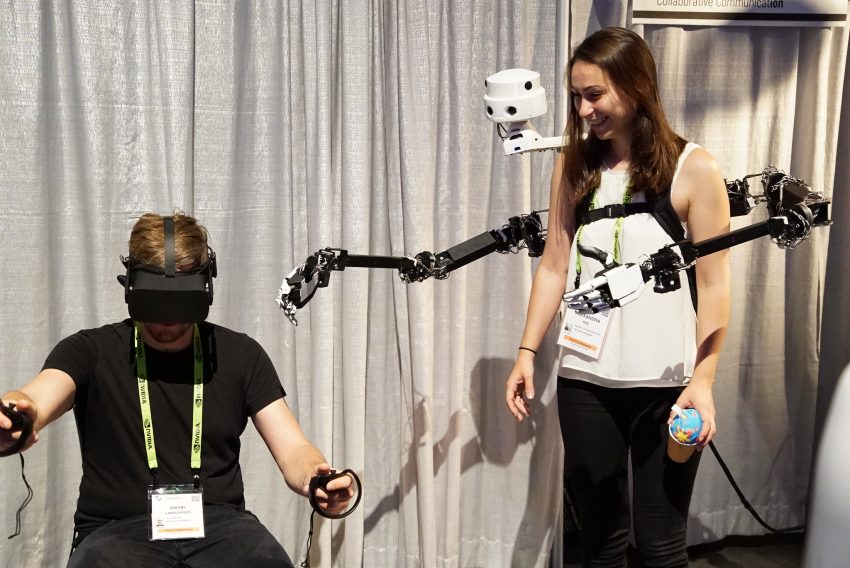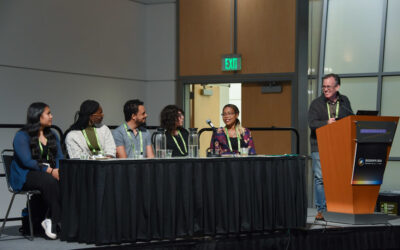photo of participants interacting with SIGGRAPH 2018 project,
“Fusion: full body surrogacy for collaborative communication,”
by Andreas Psaltis © 2018 ACM SIGGRAPH
One of the main themes at SIGGRAPH 2019 was adaptive technology. Adaptive, or, more broadly, assistive, tech represents a whole field of innovation that aims to improve the quality of everyday life for people with disabilities. We have met with the panelists of a Birds of a Feather (BoF) session on assistive technology in Japan to discuss how interactive and assistive research overlap in the Japanese scientific community. The following text is a brief digest of the main discussion points brought up by the panelists.
Japan has a long history of assistive technology, with such prominent researchers as Chieko Asakawa, who created software for people with vision disabilities, and scientific societies like IEICE Special Interest Group on Well-being Information Technology (SIG-WIT) and IPSJSpecial Interest Group on Assistive & Accessible Computing (IPSJ SIG AAC). More recently, Japanese government has been focused on the issue of Castillos Hinchables its aging population — as of now over 20% of the population is over 70 years old, with this number expected to increase in the near future. This trend creates a growing demand for the elderly care industry, which is currently experiencing a labor shortage.
The government addresses this issue through multiple socioeconomic and technological initiatives. One such initiative is Society 5.0 that aims to apply big data, AI, robotics, Internet of Things (IoT), and immersive media towards creating a new form of advanced information society. The proposed vectors of innovation include, but are not limited to, applications of ubiquitous computing and telepresence (e.g., telemedicine, remote interactions, and assistance), augmented human perception, and applications of computational methods towards expansion of user mobility.
Some of these examples might be already familiar to SIGGRAPH attendees. For instance, in the past three years, Emerging Technologies has featured demos on remote-controlled wheelchairs for nursing care, expanding mobility through additional set of robotic limbs, and muscle control and rehabilitation through electrical muscle stimulation (EMS). Other notable examples outside of SIGGRAPH include a robot café that is remotely controlled by people with disabilities, computational glasses for compensating color blindness, and computationally enhanced prosthetics for athletes with disabilities.
The panelists are certain that given the social, governmental, and business interest in assistive technology in Japan, the engagement between interactive technologies presented at SIGGRAPH and assistive technologies is only going to increase. They expect the global SIGGRAPH audience to see more interesting ideas and applications in the future. Lastly, they would like to encourage readers to engage and collaborate with the Japanese research community, and join them in subsequent panels on the subject during upcoming SIGGRAPH conferences.



